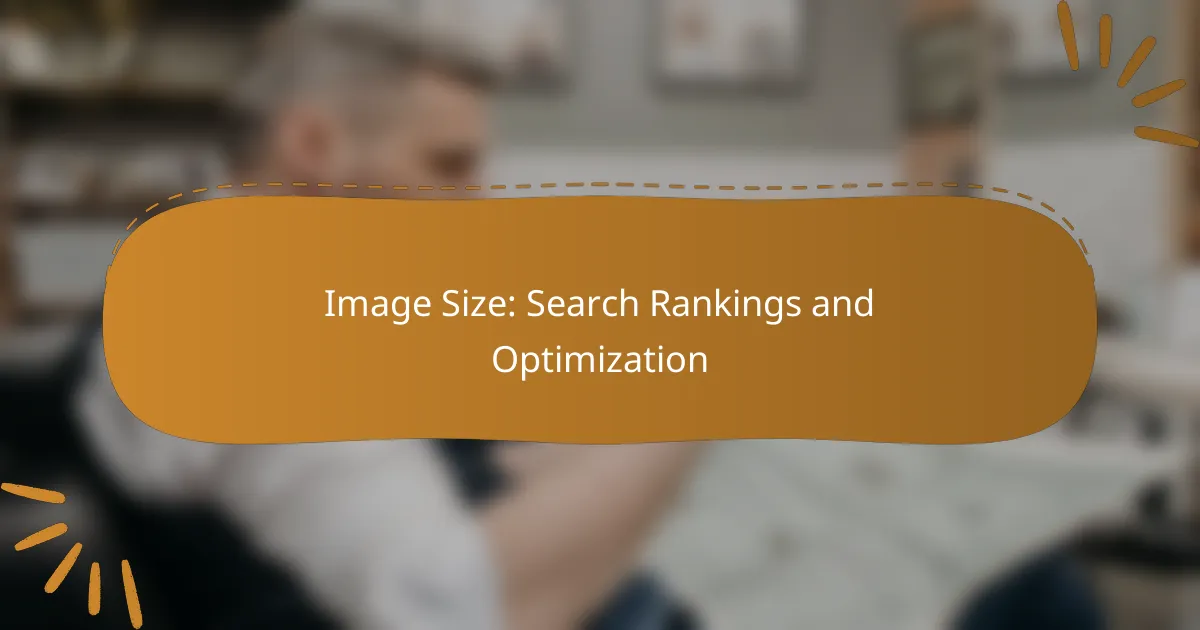Image size plays a crucial role in search rankings by affecting page load speed and user experience. By optimizing images to the recommended dimensions, such as 1200 to 2000 pixels for desktop and 600 to 800 pixels for mobile, websites can enhance loading times and improve overall SEO performance. Additionally, reducing file size and using descriptive alt text further contribute to better search visibility and accessibility.

How does image size affect search rankings?
Image size significantly impacts search rankings by influencing page load speed, user experience, and overall SEO metrics. Optimizing image size can lead to faster loading times, which is a critical factor for both user satisfaction and search engine algorithms.
Impact on page load speed
Large images can slow down page load speed, leading to higher bounce rates. Ideally, images should be compressed to a size that maintains quality while reducing load times to under 2 seconds. Tools like image compressors can help achieve this balance.
For web images, aim for file sizes under 100 KB for standard images and below 500 KB for high-resolution images. This ensures that your pages load quickly, enhancing both user experience and search rankings.
Influence on user experience
Images that load slowly can frustrate users, leading to a negative experience and potential loss of visitors. A smooth and fast-loading site encourages users to stay longer, which can positively affect engagement metrics. Consider using formats like WebP for better compression without sacrificing quality.
Additionally, responsive images that adapt to different screen sizes improve usability across devices. This adaptability is crucial as mobile traffic continues to grow, making user experience a key factor in search rankings.
Correlation with SEO metrics
Search engines consider page load speed and user engagement metrics when ranking pages. Faster loading images contribute to lower bounce rates and higher time-on-page, both of which signal quality to search engines. Regularly monitor these metrics using tools like Google PageSpeed Insights.
Furthermore, using descriptive alt text for images can enhance SEO by providing context to search engines. This practice not only aids in accessibility but also helps improve visibility in image search results, contributing to overall site traffic.
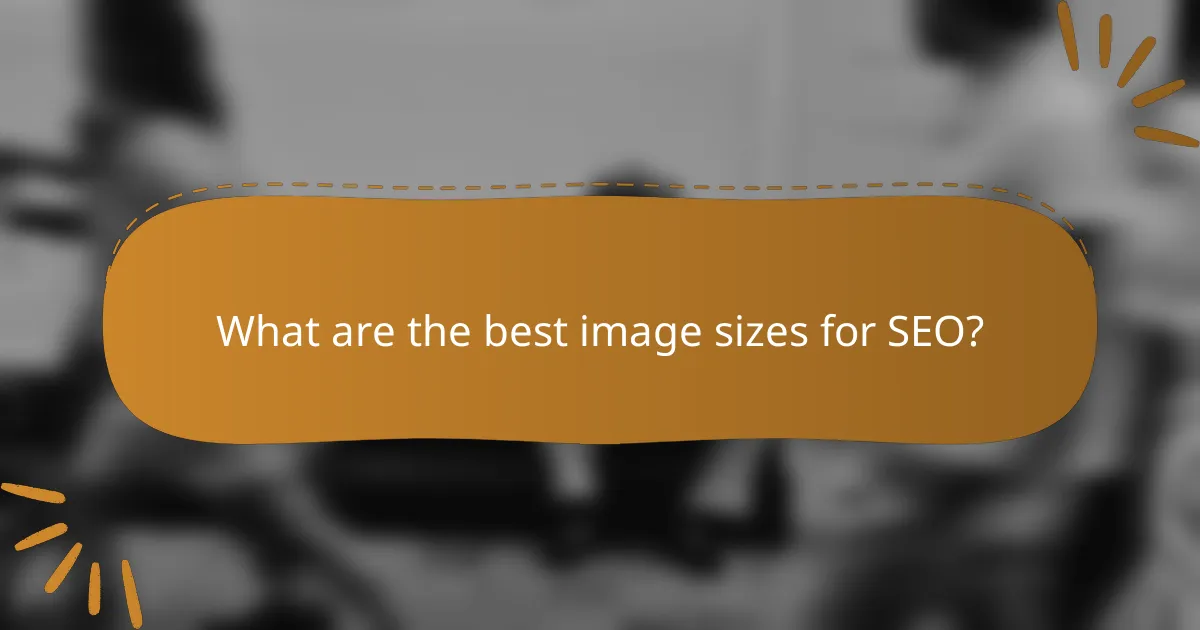
What are the best image sizes for SEO?
The best image sizes for SEO typically range from 1200 to 2000 pixels wide for desktop images, while mobile images should be around 600 to 800 pixels wide. Optimizing image size not only improves loading speed but also enhances user experience, which can positively impact search rankings.
Recommended dimensions for web images
For web images, a width of 1200 to 2000 pixels is generally recommended for high-quality visuals without excessive file sizes. Images should maintain an aspect ratio that fits the design of your website, ensuring they look good across different devices. For thumbnails, sizes around 150 to 300 pixels wide are often sufficient.
Optimal sizes for mobile devices
Mobile images should ideally be sized between 600 and 800 pixels wide to ensure quick loading times and a responsive design. Consider using responsive images that adapt to the screen size, which can help maintain quality while optimizing performance. Using formats like WebP can also enhance loading speed on mobile devices.
Common formats and their sizes
Common image formats include JPEG, PNG, and WebP, each with different size characteristics. JPEG is suitable for photographs and can be compressed to lower file sizes, while PNG is better for images with transparency but typically results in larger files. WebP offers superior compression and quality, making it a great choice for both web and mobile images.
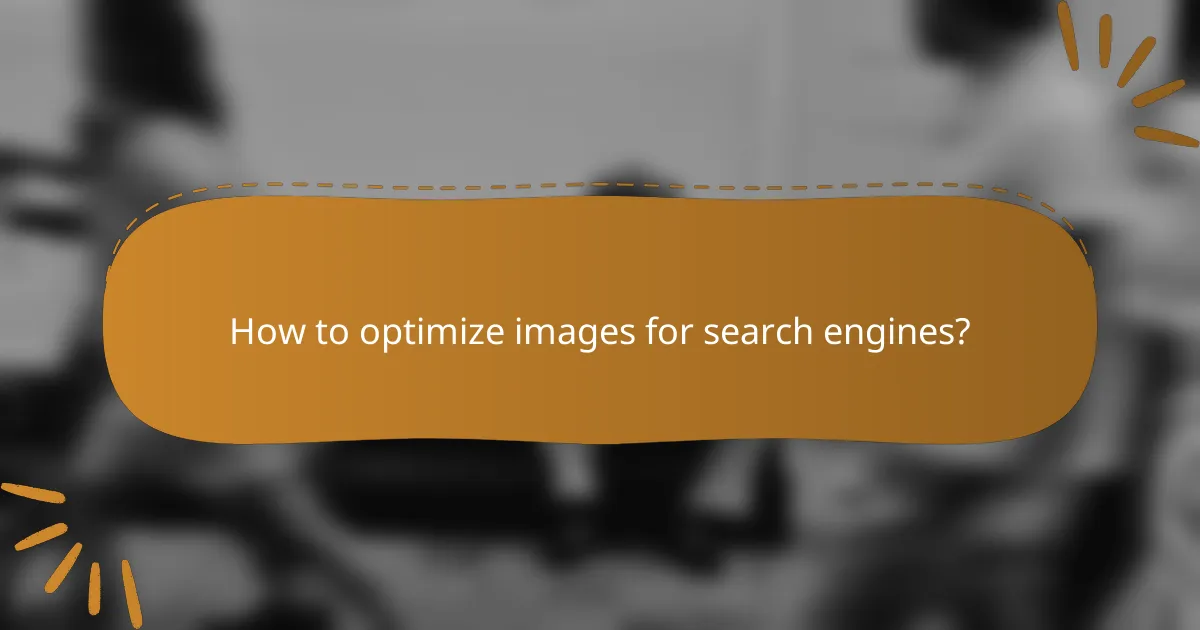
How to optimize images for search engines?
To optimize images for search engines, focus on reducing file size, using descriptive alt text, and selecting the appropriate file format. These steps enhance loading speed, improve accessibility, and contribute to better search rankings.
Compression techniques
Image compression reduces file size without significantly affecting visual quality. Use tools like TinyPNG or JPEGmini to compress images before uploading them to your website. Aim for a balance where images are under 100 KB for faster loading times while maintaining acceptable quality.
Be cautious with lossy compression, as it can degrade image quality. For images that require high fidelity, consider lossless compression methods, which preserve original quality but may not reduce file size as much.
Using alt text effectively
Alt text serves as a textual description of images, aiding search engines in understanding content. Use clear, concise descriptions that include relevant keywords, ideally under 125 characters. This practice not only helps with SEO but also improves accessibility for visually impaired users.
Avoid keyword stuffing in alt text; instead, focus on accurately describing the image’s content and context. For example, instead of “dog,” use “golden retriever playing fetch in a park” to provide better context.
Choosing the right file format
Selecting the appropriate file format is crucial for image optimization. Common formats include JPEG for photographs, PNG for images needing transparency, and GIF for simple animations. Each format has its strengths and weaknesses regarding quality and file size.
For most web images, JPEG is preferred due to its efficient compression, while PNG is ideal for graphics with text or sharp edges. Consider using WebP for modern browsers, as it offers superior compression rates and quality, though compatibility should be checked for older browsers.
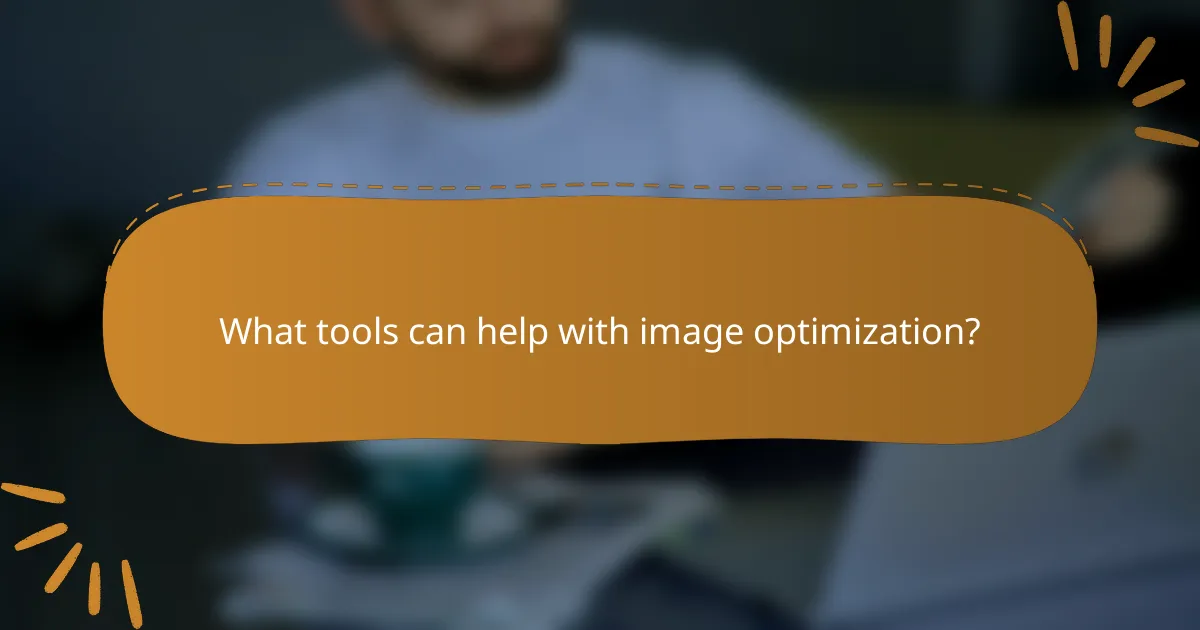
What tools can help with image optimization?
Several tools can assist with image optimization, improving load times and search rankings. These tools help with resizing, compressing, and analyzing images to ensure they meet web standards.
Adobe Photoshop for resizing
Adobe Photoshop is a powerful tool for resizing images, allowing you to adjust dimensions while maintaining quality. Use the “Image Size” feature to set specific pixel dimensions, which is essential for optimizing images for different devices.
When resizing, consider the target resolution; for web use, aim for 72 DPI. Additionally, save images in the appropriate format, such as JPEG for photographs and PNG for graphics with transparency.
ImageOptim for compression
ImageOptim is an effective tool for compressing images without significant quality loss. It removes unnecessary metadata and optimizes file sizes, which can lead to faster loading times.
To use ImageOptim, simply drag and drop your images into the application. It supports various formats, including JPEG, PNG, and GIF, making it versatile for different types of web content.
Google PageSpeed Insights for analysis
Google PageSpeed Insights is a valuable tool for analyzing your website’s performance, including image optimization. It provides insights on how images affect load times and offers suggestions for improvement.
After entering your URL, review the report for recommendations on image formats, sizes, and compression levels. Aim for a score above 90 for optimal performance, and address any flagged issues to enhance user experience and SEO.
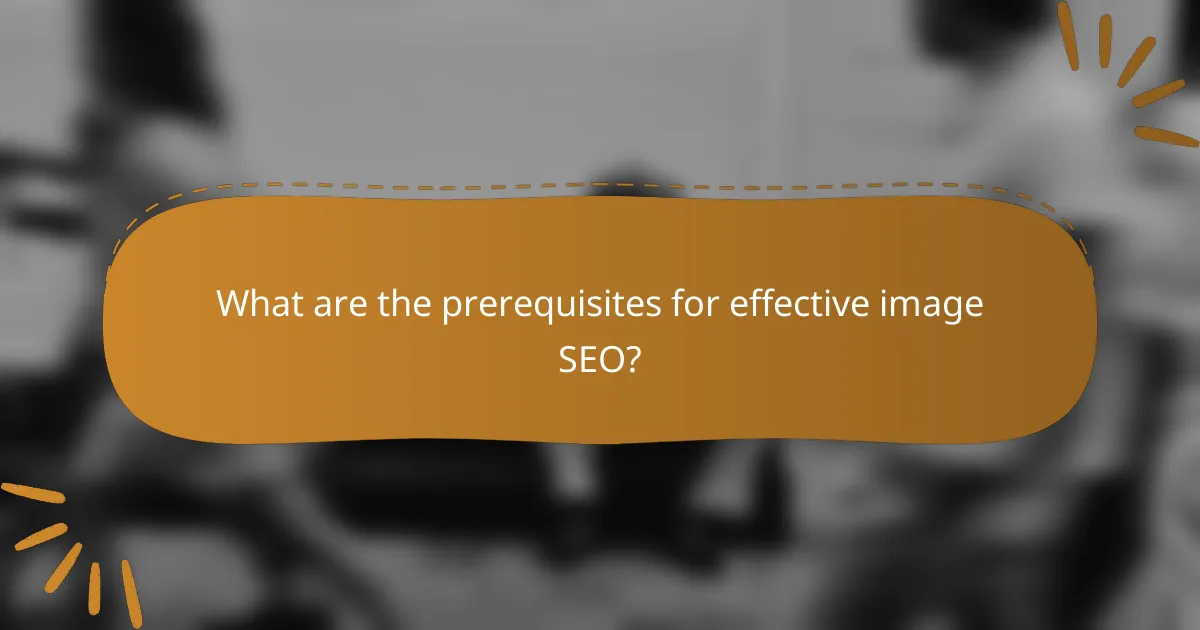
What are the prerequisites for effective image SEO?
Effective image SEO requires optimizing image size, using relevant metadata, and ensuring responsive design. These elements help improve search rankings and enhance user experience by making images load faster and display correctly across devices.
Understanding image metadata
Image metadata includes information such as file names, alt text, and captions that describe the content of an image. Properly optimized metadata helps search engines understand the context of images, which can improve visibility in search results.
When creating alt text, aim for concise descriptions that include relevant keywords without keyword stuffing. For instance, instead of “image of a dog,” use “Golden Retriever playing in the park.” This approach enhances accessibility and provides context for search engines.
Ensuring responsive design
Responsive design ensures that images adapt to various screen sizes and resolutions, which is crucial for user experience and SEO. Use CSS techniques like max-width and height attributes to maintain image quality while optimizing load times.
Consider using formats like WebP for better compression without sacrificing quality. Additionally, implement the srcset attribute in your HTML to serve different image sizes based on the user’s device, enhancing loading speed and performance across mobile and desktop platforms.

What are common mistakes in image SEO?
Common mistakes in image SEO can significantly impact search rankings and user experience. Key errors include ignoring file names, overlooking mobile optimization, and using unnecessarily large file sizes.
Ignoring file names
File names are crucial for image SEO as they provide context to search engines. Using generic names like “IMG_1234.jpg” fails to convey relevant information. Instead, use descriptive file names that include keywords related to the image content, such as “blue-widget-product.jpg.”
To optimize file names, separate words with hyphens and keep them concise. Aim for a length of around 3-5 words to ensure clarity without being overly verbose.
Overlooking mobile optimization
Mobile optimization is essential as a significant portion of web traffic comes from mobile devices. Images that are not optimized for mobile can slow down page load times, negatively affecting user experience and search rankings. Ensure that images are responsive and adapt to different screen sizes.
Utilize formats like WebP for better compression and faster loading. Additionally, consider using the srcset attribute to serve different image sizes based on the user’s device, enhancing both performance and visual quality.
Using large file sizes unnecessarily
Large image file sizes can lead to slow loading times, which can deter visitors and harm SEO rankings. Aim to keep image sizes under 100 KB when possible, while still maintaining quality. Use tools to compress images without losing significant detail.
Consider implementing lazy loading techniques, which load images only when they enter the viewport. This can improve initial load times and overall site performance, especially for pages with multiple images.
